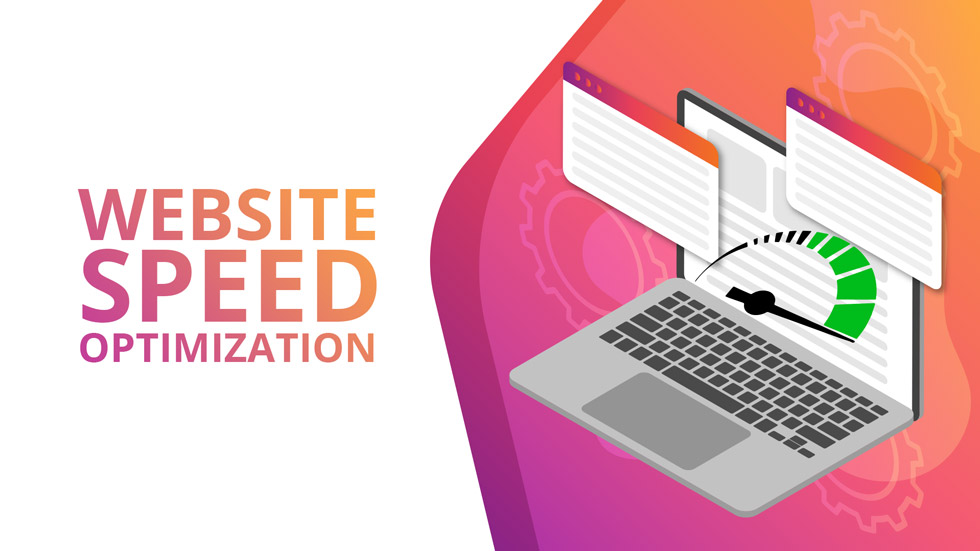7 Simple Tips for Website Optimization

Author : TechAffinity 19th Nov 2019

“53% of visitors leave a mobile page that takes more than 3 seconds to load”
Website optimization is an on-going activity for any successful business. Several factors influence how long a web page takes to load. According to Akamai‘s Digital Performance report,
- 49% of the users expect <2 second page load time.
- 30% of the users expect <1 second page load time.
- 18% of the users expect instant page load time.
According to Google, 53% of visitors leave a mobile page that takes more than 3 seconds to load. As the time to load increases from 1s to 10s, the probability of visitor bouncing increases by a whopping 123%.
The speed at which a website loads has a significant effect on Google rankings and business profits. Here are simple steps that could result in the speeding website.
Minimizing HTTP Requests
According to Yahoo, 80-90% of load time is spent on downloading webpage components like images, CSS Style SheetStyle Sheet In word processing and desktop publishing, a style sheet is a file or form that defines the layout of a document. When you fill in a style sheet, you specify such parameters as the page size, margins, and fonts. Style sheets are useful because you can use the same style sheet for many documents. For example, you could define one style sheet for personal letters, another for official letters, and a third for reports., FlashFlashFlash, a popular authoring software developed by Macromedia, is used to create vector graphics-based animation programs with full-screen navigation interfaces, graphic illustrations, and simple interactivity in an antialiased, resizable file format that is small enough to stream across a normal modem connection., HTML, Redirects, and Javascript. Reducing the number of components reduces the number of HTTPHTTPHTTP means HyperText Transfer Protocol. HTTP is the underlying protocol used by the World Wide Web and this protocol defines how messages are formatted and transmitted, and what actions Web servers and browsers should take in response to various commands. requests required to render a page. Load your website in lesser time by determining and reducing this number.
Asynchronous Loading of Elements – CSS and JavaScript Files
In a web page, elements load in two ways: Synchronous LoadingSynchronous LoadingSynchronous loading occurs when the browser must halt the rendering of the page in order to complete the execution of JavaScript code. When the browser encounters a synchronous JavaScript tag, it blocks the page from rendering until the code execution completes. This is analogous to a slow-moving truck in a one-lane road that will slow down all the traffic behind it. and Asynchronous LoadingAsynchronous LoadingThe modern method being adopted by the industry is to load tags asynchronously. In this method, JavaScript code is processed in parallel to the rest of the page content. This means that even if a vendor tag is slow to respond or to load, it will not slow down the rest of the page. . In synchronous loading, elements are uploaded in their order of appearance, one at a time. This happens simultaneously and not in any particular sequence during asynchronous loading. The components render as and when they are available, without waiting for the entire file to be uploaded, significantly impacting load time.
Minimizing the Time to Start Loading – First Contentful Paint, First Meaningful Paint

Though load time is an important factor in determining speed, it is equally critical to know how long it takes for a webpage to start loading. First Meaningful Paint measures when the primary content of a page is visible and First Contentful Paint marks the time at which the first text or image is painted.
With a benchmark of 200ms, (Time to First Byte) TTFBTTFBTime to first byte (TTFB) is a measurement used as an indication of the responsiveness of a web server or other network resources. TTFB measures the duration from the user or client making an HTTP request to the first byte of the page being received by the client's browser. is the time a browser takes to receive its first byte of data from the server. Being a server-side concern, it could be due to network issues, dynamic content creation, web server configuration, and site traffic.
Two of these issues – dynamic content creation and server configuration – can be proactively addressed. With a dynamic page, the server is required to interact with several PHP elements for building a web page. Using cache features, web pages can be preloaded, saving precious time.
Using Image Compression – Compression by Resolution
By using compression software, web pages could be compressed to a desirable extent. Through optimal page compression, the download time could be fixed. According to Yahoo, gzipgzip gzip is a file format and a software application used for file compression and decompression. The program was created by Jean-loup Gailly and Mark Adler as a free software replacement for the compress program used in early Unix systems, and intended for use by GNU. reduces download time by 70%.
Google recommends using – Image formats like JPEG 2000, JPEG XR, and WebP often provide better compression than PNG or JPEG, which means faster downloads and less data consumption.
gzip is a software compression program that analyzes code, removes repetitive lines of code and excessive components from the page. It works well with HTML and CSS files. With 90% of the internet using browsers that support gzip, it is a useful tool for improving load time and for code optimization.
Reducing Image Size – Altering by Dimension
Images play a crucial role in determining load time. For an E-commerce company, it is essential to get images optimized. It is recommended to display at least 3 product images to encourage customers to buy your product. Based on the need and availability, it is best to choose one among the 4 image formats – PNG, JPG, GIF, and WEBP. Serve images that are appropriately-sized to save cellular data and improve load time. Consider lazy-loading offscreen and hidden images after all critical resources have finished loading to lower time to interactive.
One way to reduce size is by image cropping. Instead of uploading an image with its default width of 2000px width, it is better to crop it to the desired width of 500px, 550px, 600px, etc. Irrespective of the format, images could be compressed using tools like WPSmush or third-party extensions. Tools like Pingdom Website Speed Test helps you analyze your website load speed. The test is designed to help make your site faster by identifying what about a webpage is fast, slow and too big.
Also Read – 7 Tools to Speed Up your WordPress & Magento Managed Online Store
Using a CDN (Content Delivery Network) – Server Closest to the Visitor

Any server is capable of handling a given volume of traffic at a time. To handle multiple visitor requests & heavy traffic, it is ideal to look for a server closest to the visitor. When the request comes from a visitor located far away from the location of the server, it would take that much longer to receive and process the request.
To eliminate such constraints and enable content download from a nearby server, we make use of CDN ( Content Delivery Network). When there are high-resolution images on a website, CDN drastically reduces load time. Two of the most commonly used CDNs are MaxCDN and Cloudflare.
Lowering Redirects – Removing Deleted or Redundant Links
When pages get moved or deleted, it is essential to remove any broken links created during this process. Redirects are very useful in handling such issues. However, having a lot of such HTTP requests can end up affecting site speed adversely.
The ideal situation is to remove all such unwanted links. However, restructuring a website with a lot of webpages might seem impossible. Third-party apps can help in identifying, eliminating such redirects resulting in a speeding website
At TechAffinity, we keep making incremental changes to our web pages. Our digital marketing experts provide the best services to our clients and partners. To learn more about our digital marketing services, email your queries to media@techaffinity.com and schedule a meeting with us. Our team will reach out to you at the earliest.